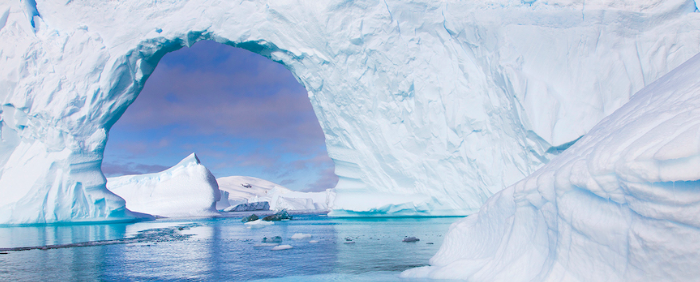
The Antarctic ice melts. Moreover, at a pace that seems to be accelerating. Yet scientists assure that it is still possible to reverse the course of events. But time is running out. To save Antarctica, we will need to act in a coordinated way in the next ten years. Otherwise, it is the whole of our planet that risks paying.
What are the consequences of global warming on Antarctica ? Until today scientists were struggling to answer. Was the continent gaining mass due to larger snowfall or wasting it due to melting ice and iceberg separation? A study involving more than 80 scientists today claims that Antarctica has lost 3,000 billion tonnes of ice since 1992. And this same study warns that since 2012, the rate of melting has dramatically accelerated from 76 billion tons a year … to 219 billion tons a year!
Remember that the future of Antarctica is closely linked to that of the rest of our planet. And indeed, ours. Because if Antarctica reacts to climate change, it in turn affects the global environment. Thus, the global level of the seas in particular would have already risen by almost eight millimeters under the effect of ice melts recorded since 1992.
Did you know ?
Antarctica is over 98% covered by permanent ice. The continent island alone accounts for 90% of the land ice. Enough to potentially raise the ocean level by almost 60 meters.
More than 90% of the ice is in East Antarctica, which has remained relatively stable despite global warming. In the last 25 years, most of the continent’s ice mass has been lost in West Antarctica.
For another international team of researchers, time is now running out. We will have to act in the next ten years if we hope to save Antarctica. And with him, the rest of our planet. “Some of the changes that Antarctica is currently experiencing are already irreversible. But we can still avoid the worst, “ says Martin Siegert, professor at Imperial College London (UK). Provided that strict regulations are put in place based on solid international cooperation and rigorous scientific results.
The worst can still be avoided
To convince, the researchers worked on two extreme scenarios.
- In the first scenario, greenhouse gas emissions continue to increase. So by 2070, temperatures could rise by as much as 3.5 ° C, compared to the temperatures of 1850. The melting of the Antarctic ice would contribute for more than 25 centimeters to the overall rise in the level of In summer, nearly 50% of the ice extent will disappear, leading to local surface cooling and changes in ocean currents . As the global temperature of the ocean increases, its capacity to absorb atmospheric CO 2 will decrease, further accelerating global warming .
- In the second scenario, emissions of greenhouse gases are significantly reduced. The rise in temperatures would then be limited to 2 ° C. And melting ice would not contribute more than six centimeters to raising levels. Ocean currents should be preserved as well as CO 2 absorptioncapacity .
The study is also concerned about the direct impact of human activities that could develop in Antarctica. If these are not regulated, the consequences on the ecosystem could be catastrophic. A fishing more intensively could fundamentally change the structure of this ecosystem. Not to mention the temptation to exploit mining resources such as coal or iron . A temptation that could become stronger with the disappearance of some of the frozen cover of the continent. As could also become the temptation to open the scene to mass tourism.
- Since 1992, Antarctica has lost 3,000 billion tons of ice.
- Since 2012, the rate of melting has been multiplied by three.
- However, it remains possible to save Antarctica if we act in the next decade, in a coordinated and science-informed manner.